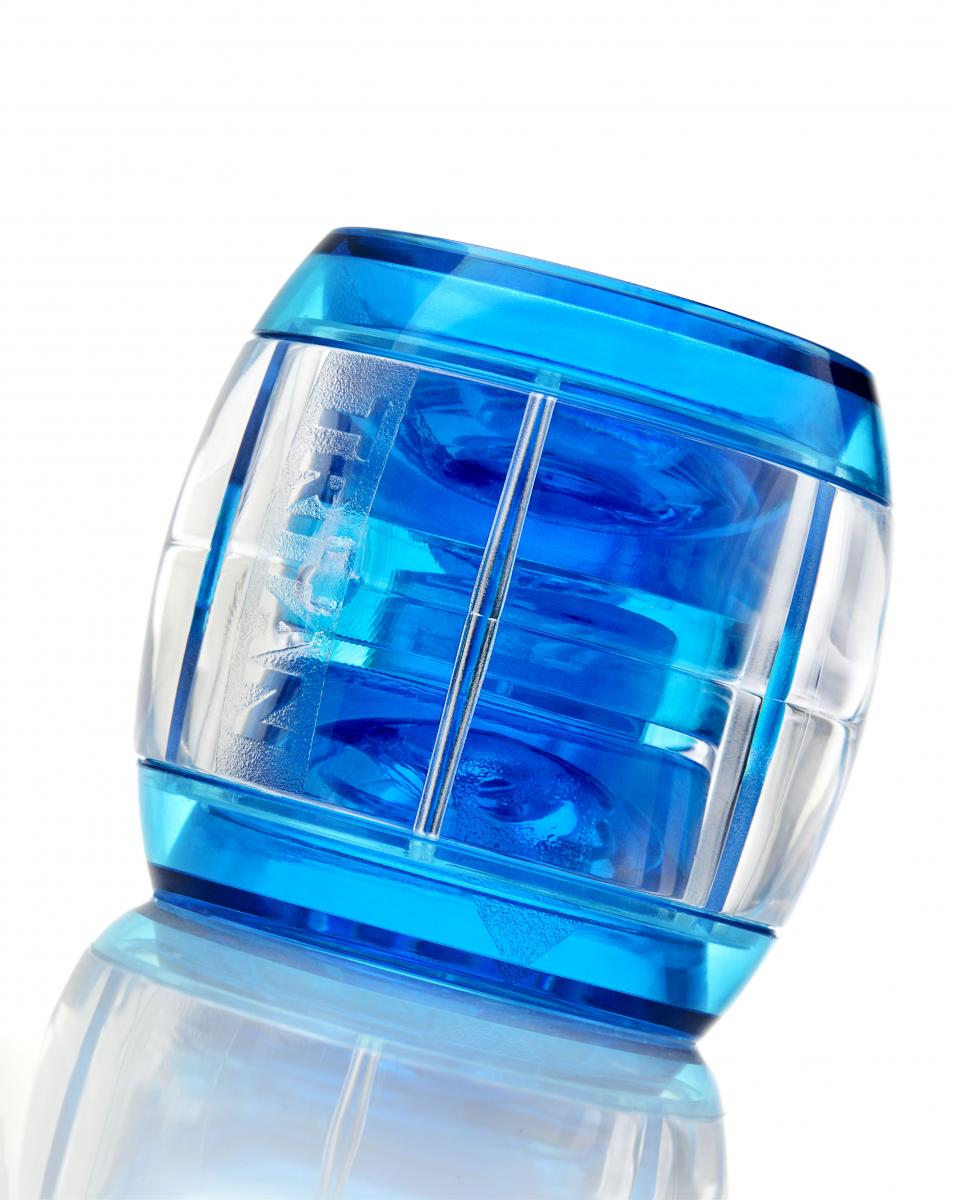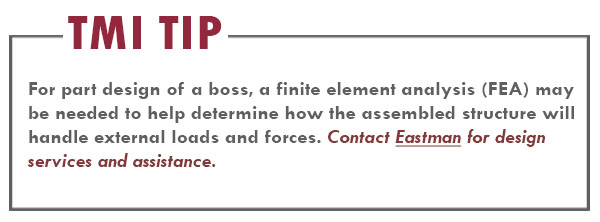Reducing stress in the assembly process
 Parts made from Eastman Tritan™ copolyester can be assembled using a variety of joining techniques, including chemical, mechanical, or thermal methods. The choice of assembly method will depend on the end-user requirements of your application. With whatever method you choose, however, the assembly process can cause stress in devices.
Parts made from Eastman Tritan™ copolyester can be assembled using a variety of joining techniques, including chemical, mechanical, or thermal methods. The choice of assembly method will depend on the end-user requirements of your application. With whatever method you choose, however, the assembly process can cause stress in devices.The good news is that Tritan is an inherently tough material and can stand up to these stresses. Consider mechanical joining methods. In this technique, molded-in bosses are commonly used to accept screws or threaded inserts, while molded-in or postmold inserts are commonly used where a plastic cover or part must be removed repeatedly.
Tritan can be joined by using screws, rivets, threaded inserts, or snap-fit methods and can be molded into various shapes—such as bosses—that can accept screws or inserts. When a screw is tightly turned, it can put a lot of stress on the surrounding plastic. Excessive stresses can cause cracking of the boss or hole with or without exposure to chemicals in the end-use environment. Tritan’s superior durability and high chemical resistance ensures that parts made with the material will stay intact—even in the presence of harsh chemicals.
Special screws have been developed over the years that incorporate uniquely designed threads that help to reduce radial/hoop stresses in the plastic material and provide increased pull-out resistance. Bosses—or cored-out holes—require special care in their design to allow for proper flow of the plastic. Proper sizing of the boss and related gussets will help avoid sink marks and provide good structural strength. Adding a radius to all sharp corners will further reduce stress concentrations around the boss.
For more information, check out our Secondary operations guide for Eastman Tritan copolyester.






 Close
Close


